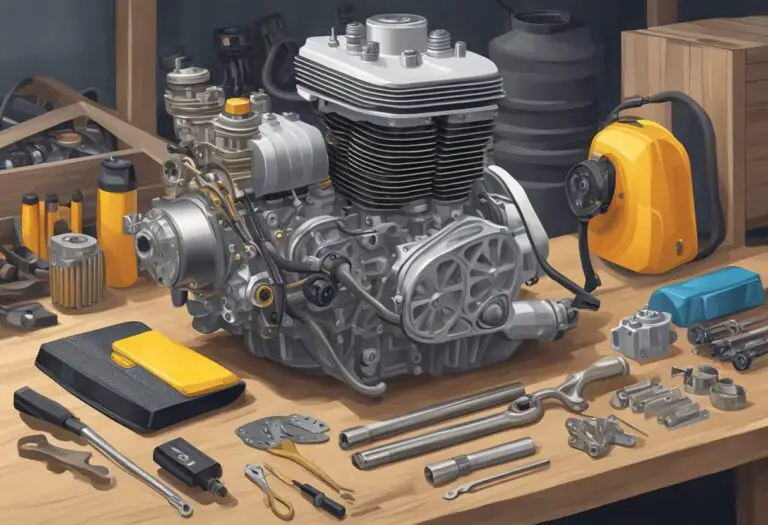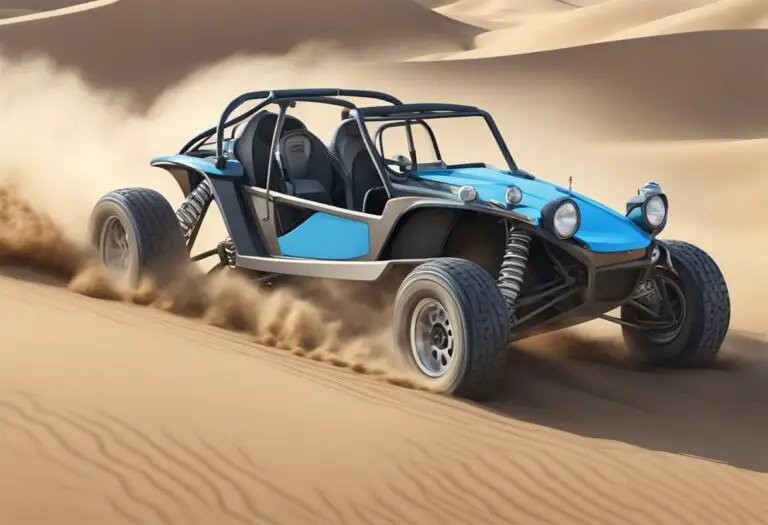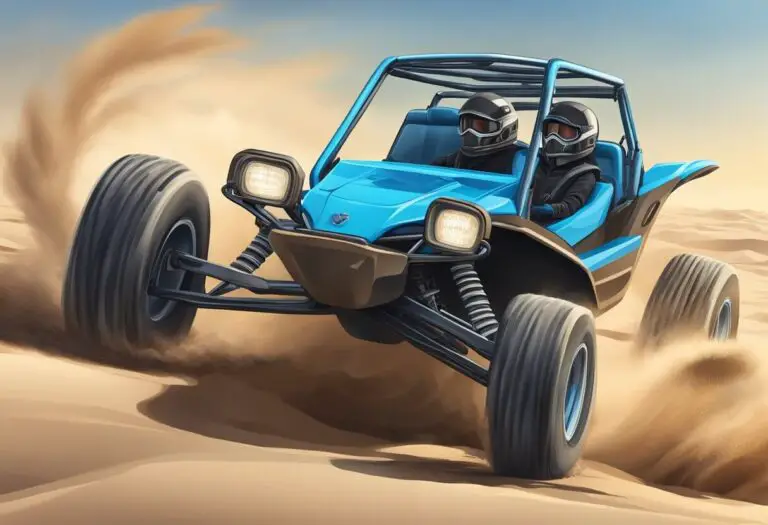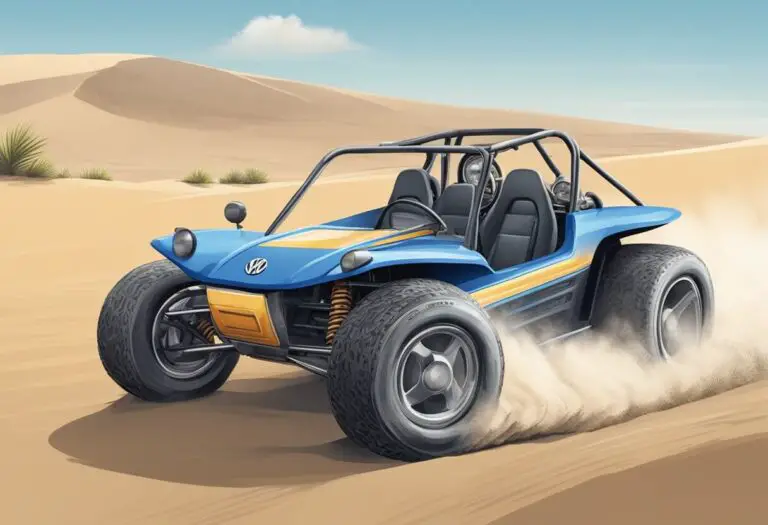Dune Buggy with Volkswagen Engine: A Powerful Combination
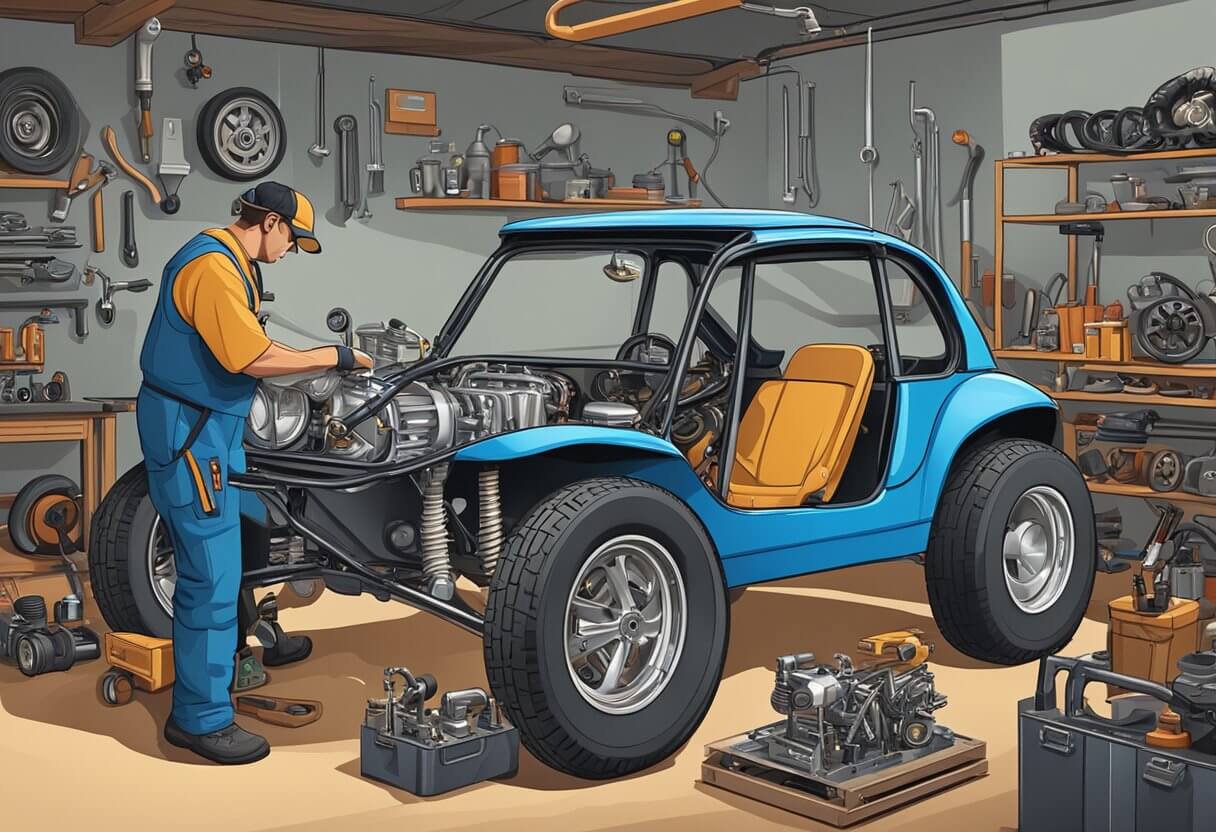
Dune buggies are off-road vehicles that are designed to traverse sandy terrain. They are known for their unique design and ability to handle rough terrain. The Volkswagen engine is a popular choice for dune buggies due to its reliability and performance capabilities.
The history of dune buggy Volkswagen engines dates back to the 1960s when enthusiasts began modifying Volkswagen Beetles for off-road use. The air-cooled engine was a popular choice due to its simplicity and ease of maintenance. Over time, the engine evolved, and various modifications were made to improve its performance.
Types of Volkswagen engines for dune buggies include the 1641cc single port and dual port engines, 1776cc dual port long block engine, and 2332cc stroker engine. These engines are built for performance and are designed to handle the demands of off-road driving. With proper maintenance and modifications, these engines can provide excellent performance on the sand dunes.
Key Takeaways
- Dune buggies are off-road vehicles designed to traverse sandy terrain.
- The Volkswagen engine is a popular choice for dune buggies due to its reliability and performance capabilities.
- Types of Volkswagen engines for dune buggies include the 1641cc single port and dual port engines, 1776cc dual port long block engine, and 2332cc stroker engine.
History of Dune Buggy Volkswagen Engines
Dune buggies have been around since the 1960s, and have become an iconic part of automotive culture. They were originally created by modifying existing road vehicles, and one of the most popular vehicles to modify was the Volkswagen Beetle. The Beetle’s rear-mounted engine made it an ideal choice for dune buggy enthusiasts, as it provided good traction on sandy terrain.
The first dune buggies were created in California, where they quickly became popular with off-road enthusiasts. The first commercially successful dune buggy was the Meyers Manx, which was created by Bruce Meyers in 1964. The Manx was based on a shortened Volkswagen Beetle chassis, and featured a fiberglass body and a rear-mounted engine.
As dune buggies grew in popularity, so did the demand for more powerful engines. Volkswagen responded by introducing a range of high-performance engines, including the Type 1, Type 2, and Type 3 engines. These engines were used in a variety of dune buggy models, including the Manx, the Berrien Buggy, and the Deserter GT.
Over the years, dune buggy enthusiasts have continued to modify and improve Volkswagen engines to suit their needs. Today, it is common to see dune buggies with engines that have been bored out, turbocharged, or fitted with aftermarket performance parts.
Types of Volkswagen Engines for Dune Buggies
When it comes to choosing the right engine for a dune buggy, Volkswagen engines are a popular choice. There are two main types of Volkswagen engines available for dune buggies: air-cooled engines and water-cooled engines.
Air-Cooled Engines
Air-cooled engines are the most common type of engine used in dune buggies. They are simple and reliable, making them a popular choice for off-road enthusiasts. These engines rely on air to cool the engine, which is why they are called air-cooled engines.
VW Type 1 engines are a popular choice for air-cooled engines in dune buggies. The size of the engine you choose will depend on your needs and preferences. A VW Type 1 engine can range from a stock 69mm stroke to a 90mm stroke. The larger the stroke, the more power the engine will produce.
Water-Cooled Engines
Water-cooled engines are becoming more popular in dune buggies because they offer better cooling performance and can be more efficient. These engines use a liquid coolant to regulate the engine temperature, which is why they are called water-cooled engines.
One popular water-cooled engine option for dune buggies is the Volkswagen TDI engine. These engines are known for their fuel efficiency and torque, making them a popular choice for off-road enthusiasts. Another option is the Volkswagen VR6 engine, which is known for its power and performance.
When choosing between air-cooled and water-cooled engines for a dune buggy, it’s important to consider your needs and preferences. Air-cooled engines are simple and reliable, while water-cooled engines offer better cooling performance and efficiency. Ultimately, the choice comes down to personal preference and the specific needs of the driver.
Engine Specifications and Performance
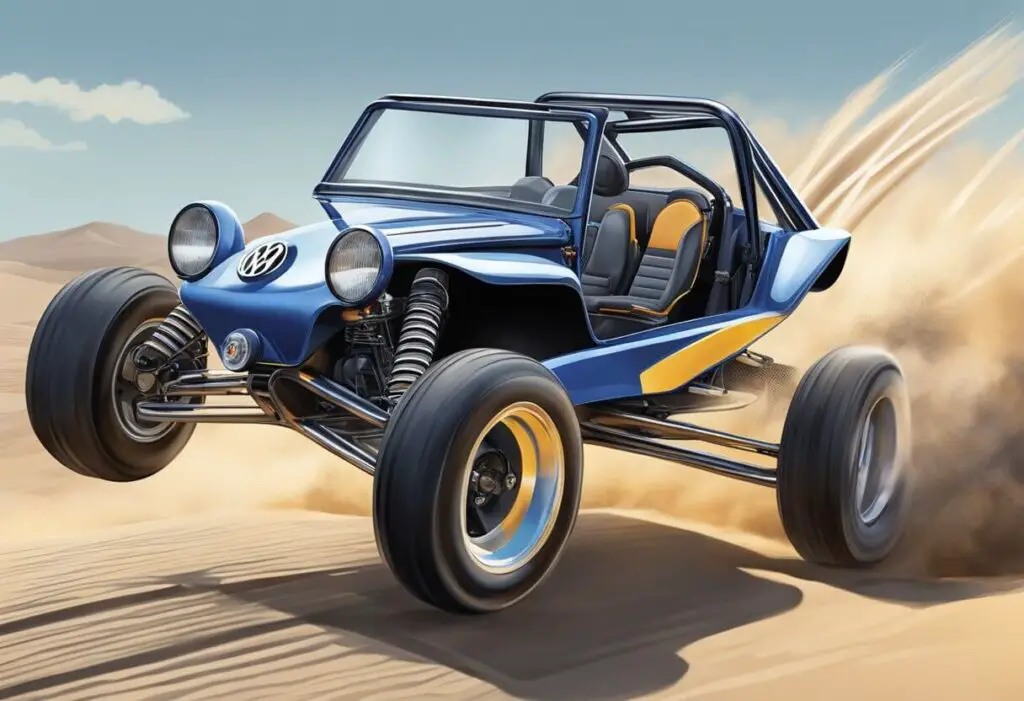
Displacement and Power
The Volkswagen engine is a popular choice for dune buggies due to its reliability and ease of maintenance. The most common engine used is the air-cooled flat-four engine, which comes in various displacements ranging from 1200cc to 2276cc. The larger the displacement, the more power the engine produces.
For example, a 1641cc engine produces around 65 to 70 horsepower, while a 2276cc engine produces around 155 horsepower. It is important to note that the power output also depends on the type of engine, carburetor, and exhaust system used.
Torque and Compression Ratio
The Volkswagen engine is known for its high torque output, which is essential for off-road driving. The torque output ranges from 80 ft-lbs to 170 ft-lbs depending on the engine size and type.
The compression ratio of the engine is also an important factor that affects its performance. The compression ratio is the ratio of the volume of the combustion chamber when the piston is at the bottom of its stroke to the volume when the piston is at the top of its stroke.
A higher compression ratio results in better fuel efficiency and power output, but it also requires higher octane fuel. The compression ratio of the Volkswagen engine ranges from 7.5:1 to 9.6:1 depending on the engine size and type.
Engine Modifications for Dune Buggies
Dune buggies are off-road vehicles that require an engine that can handle the rough terrain. Volkswagen engines are a popular choice for dune buggies due to their durability and reliability. However, some modifications may be necessary to improve the performance of the engine.
Upgrade Kits
Upgrade kits are a popular option for those looking to improve the performance of their Volkswagen engine. These kits typically include high-performance camshafts, carburetors, and exhaust systems. The camshaft is responsible for opening and closing the engine’s valves, which affects the engine’s performance. A high-performance camshaft can increase the engine’s horsepower and torque.
Carburetors are responsible for mixing air and fuel to create the combustion necessary to power the engine. Upgraded carburetors can improve the engine’s performance by increasing the amount of air and fuel that enters the engine. Exhaust systems can also improve the engine’s performance by reducing backpressure and increasing airflow.
Custom Builds
Custom builds are another option for those looking to modify their Volkswagen engine. Custom builds can include everything from a simple engine rebuild to a complete engine overhaul. Some popular modifications include increasing the engine’s displacement, upgrading the cylinder heads, and installing a turbocharger.
Increasing the engine’s displacement involves increasing the size of the engine’s cylinders. This can be done by boring out the cylinders or installing larger pistons. Upgrading the cylinder heads can improve the engine’s airflow and increase horsepower. Installing a turbocharger can also increase the engine’s horsepower by forcing more air into the engine.
Maintenance and Troubleshooting
Routine Maintenance
Regular maintenance is essential to keep the dune buggy engine running smoothly. Here are some routine maintenance tasks that should be performed:
- Change the oil and oil filter every 3,000 miles or every six months, whichever comes first.
- Check the air filter every 5,000 miles or every year, and replace it if it is dirty.
- Inspect the spark plugs every 10,000 miles or every two years, and replace them if they are worn or dirty.
- Check the timing belt every 30,000 miles or every three years, and replace it if it is worn or damaged.
- Inspect the fuel filter every 10,000 miles or every two years, and replace it if it is dirty.
Common Issues and Solutions
Despite regular maintenance, dune buggy engines may still experience issues. Here are some common issues and solutions:
- No spark: If the engine is not starting and there is no spark, it could be due to a faulty ignition coil or distributor cap. These parts should be inspected and replaced if necessary.
- Overheating: If the engine is overheating, it could be due to a malfunctioning cooling system. The coolant level should be checked, and the radiator, water pump, and thermostat should be inspected and replaced if necessary.
- Poor performance: If the engine is running poorly or lacks power, it could be due to clogged fuel injectors or a dirty air filter. These parts should be inspected and cleaned or replaced if necessary.
- Oil leaks: If the engine is leaking oil, it could be due to a faulty gasket or seal. These parts should be inspected and replaced if necessary.
Routine maintenance and timely troubleshooting keep the dune buggy Volkswagen engine running smoothly. Following maintenance tasks and addressing common issues promptly ensures a reliable, enjoyable off-road experience.
Installation Guide
Engine Mounting
Installing a Volkswagen engine in a dune buggy requires careful consideration of the mounting process. The engine must be properly secured to ensure that it does not move or shift during operation. The engine mounting process consists of several steps, including:
- Preparing the engine: Before mounting the engine, it is essential to prepare it by removing any unnecessary parts or components. This may include the alternator, carburetor, and distributor.
- Aligning the engine: Once the engine is prepared, it should be aligned with the mounting brackets. The engine should be centered and level to ensure that it is properly secured.
- Mounting the engine: The engine should be mounted using high-quality bolts and brackets. The bolts should be tightened to the manufacturer’s specifications to prevent any movement or shifting during operation.
Wiring and Electronics
Wiring and electronics are an essential part of any dune buggy Volkswagen engine installation. It is essential to ensure that all wiring and electronics are properly installed and connected to avoid any electrical problems. The wiring and electronics process consists of several steps, including:
- Preparing the wiring: Before installing the wiring, it is important to prepare the wiring harness by removing any unnecessary wires or components.
- Connecting the wires: Once the wiring harness is prepared, the wires should be connected to the appropriate components, including the battery, starter, and alternator.
- Testing the electronics: After the wiring is connected, it is essential to test the electronics to ensure that they are functioning correctly. This may include testing the ignition system, lights, and other electronic components.
Installing a Volkswagen engine in a dune buggy requires careful consideration of mounting and wiring/electronics. Follow the outlined steps to ensure proper engine mounting and functioning wiring/electronics.
Regulations and Safety
Emission Standards
When it comes to dune buggy Volkswagen engines, it is important to keep in mind the emission standards set by the Environmental Protection Agency (EPA). These standards are in place to ensure that the vehicle’s emissions do not harm the environment or pose a threat to public health. It is important to check with the local authorities to ensure that the dune buggy meets the emissions standards before taking it on the road.
Safety Standards
Safety is a top priority when it comes to operating a dune buggy on the road. The Department of Transportation (DOT) has set several safety requirements for operating a street-legal motorized vehicle. These requirements include working engine, brakes, seats, frame, and other safety features.
One of the key safety features that should be checked is the exhaust system. The exhaust system plays a critical role in ensuring a smooth and efficient operation of the engine. It is responsible for removing the exhaust gases from the engine and directing them out of the vehicle. Headers, mufflers, and exhaust pipes are some of the critical components of the exhaust system that should be checked regularly.
In addition to the exhaust system, other safety features such as seat belts, roll cages, and lights should also be checked to ensure that they are functioning properly. It is important to note that each state may have its own specific safety requirements for dune buggies, so it is essential to check with the local authorities before taking the vehicle on the road.
Overall, following the emission and safety standards set by the EPA and DOT respectively, can help ensure that the dune buggy Volkswagen engine is safe and legal to operate on the road.
Comparative Analysis
Volkswagen vs Other Engines
When it comes to choosing an engine for a dune buggy, there are several options available. Gasoline, diesel, and electric engines are the most common engine types used in dune buggies. However, air-cooled Volkswagen flat-four engines have been the traditional choice for many buggy enthusiasts.
One of the main advantages of using a Volkswagen engine is its reliability. Volkswagen engines are known for their durability and longevity. They are also relatively easy to maintain and repair, which makes them a popular choice among dune buggy enthusiasts.
On the other hand, other engine types such as diesel and electric engines offer better fuel efficiency and lower emissions. However, they may not be as powerful as a gasoline engine, which means they may not be suitable for off-road driving.
Cost-Benefit Analysis
When it comes to choosing an engine for a dune buggy, the cost-benefit analysis is an important factor to consider. While Volkswagen engines may not be the most fuel-efficient or environmentally friendly, they offer a good balance between performance and cost.
Volkswagen engines are relatively inexpensive to purchase, and they are also easy to maintain and repair. This means that the overall cost of ownership is relatively low compared to other engine types.
However, if fuel efficiency and environmental impact are a top priority, then a diesel or electric engine may be a better choice. These engine types may be more expensive to purchase, but they offer better fuel efficiency and lower emissions, which can result in long-term cost savings.
Future Trends in Dune Buggy Engines
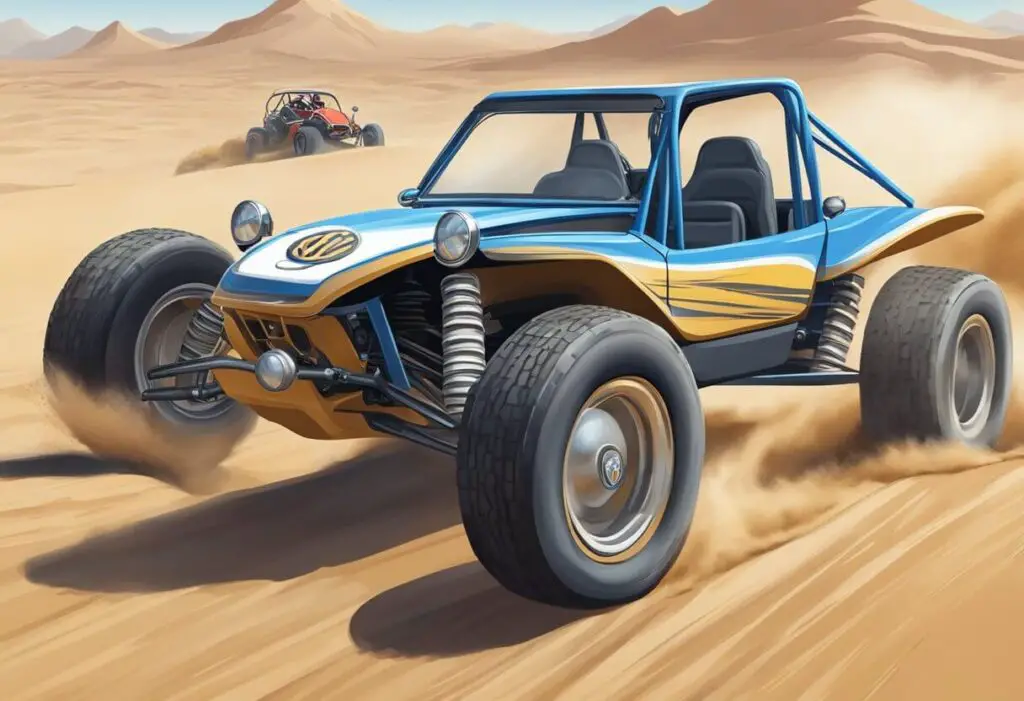
As the demand for eco-friendly and high-performance engines continues to grow, the future of dune buggy engines looks promising. Here are some of the trends that are expected to shape the future of dune buggy engines:
Electric Engines
Electric engines are becoming increasingly popular in the automotive industry, and dune buggies are no exception. The Volkswagen electric dune buggy is a great example of how electric engines can be used to power these vehicles. Electric engines are quiet, efficient, and produce zero emissions, making them an ideal choice for off-road vehicles.
Hybrid Engines
Hybrid engines are another trend that is expected to shape the future of dune buggy engines. These engines combine the benefits of electric and traditional engines to create a more efficient and powerful engine. Hybrid engines are capable of producing more power than traditional engines while using less fuel.
Lightweight Materials
The use of lightweight materials is another trend that is expected to shape the future of dune buggy engines. Lightweight materials such as carbon fiber and aluminum are becoming increasingly popular in the automotive industry due to their ability to reduce weight without sacrificing strength. The use of these materials in dune buggy engines can help to improve performance and fuel efficiency.
Advanced Engine Management Systems
Advanced engine management systems are also expected to play a significant role in the future of dune buggy engines. These systems use advanced sensors and control units to optimize engine performance and fuel efficiency. They can also be used to diagnose and troubleshoot engine problems, making maintenance easier and more efficient.
Overall, the future of dune buggy engines looks bright. With the increasing demand for eco-friendly and high-performance engines, we can expect to see more innovative and advanced engines in the coming years.

